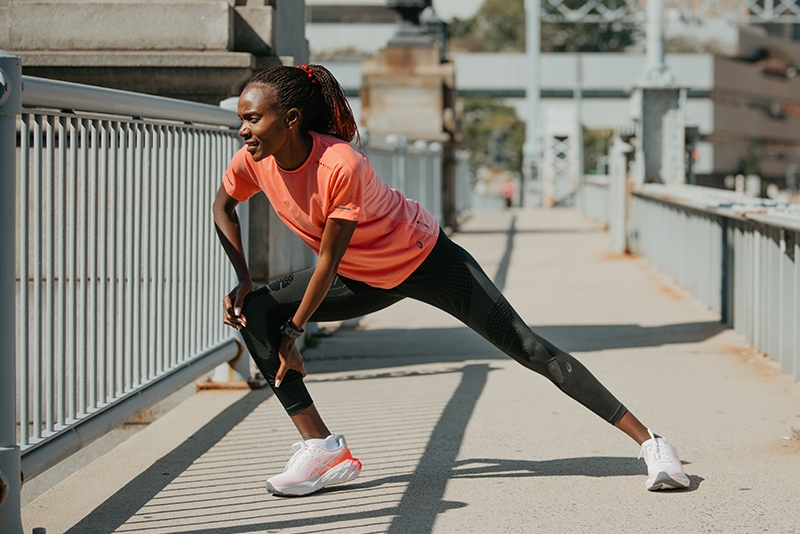Master Your Running Workout: Efficient Strategies for Success
Wiki Article
Exactly How to Prevent and Handle Pain in Running: Expert Tips and Suggestions
The pursuit of that jogger's high can in some cases be prevented by the unwelcome friend of pain. There exist tested strategies and skilled advice that can assist minimize and handle these pains, allowing you to focus on the pleasure of running itself.Importance of Appropriate Shoes
Proper shoes plays an essential duty in stopping and taking care of pain for runners, as it significantly affects their convenience, performance, and overall foot health and wellness. When it comes to running, wearing the right shoes can make all the distinction. Uncomfortable or improper footwear can cause a host of issues such as blisters, shin splints, plantar fasciitis, and a lot more extreme injuries like tension cracks.Picking the correct running shoes entails taking into consideration aspects such as foot type, gait mechanics, running surface, and individual preferences. Runners with high arches may need even more padding and assistance, while those with level feet may take advantage of security shoes. Additionally, comprehending pronation (the internal rolling of the foot) and supination (the outside rolling of the foot) can aid in selecting footwear that provide the best degree of arch support.
Spending in top quality running footwear that are ideal for your specific demands can aid protect against discomfort and pain while improving your running experience. Focusing on appropriate footwear is not just about efficiency yet additionally regarding securing your foot health and wellness in the future.

Reliable Workout Techniques
Footwear option is simply one element of planning for a successful run; another essential element is applying reliable workout techniques to optimize efficiency and decrease the risk of injury. A vibrant warm-up routine prior to a run assists increase blood circulation to the muscle mass, improves adaptability, and enhances the variety of movement of the joints. Dynamic extends like leg swings, high knees, and hip circles are advantageous in preparing the body for the physical demands of running. Slowly raising the intensity of the workout exercises can aid trigger the muscles and boost neuromuscular sychronisation.Along with vibrant stretches, incorporating some light cardio exercises such as jogging or missing rope can even more boost the heart price and warm up the body. This mix of dynamic stretching and light cardio helps loosen limited muscles, oil the joints, and mentally prepares the jogger for the upcoming exercise (running workout). By making workouts a regular part of your running regimen, you can significantly minimize the threat of injuries and carry out at your ideal throughout each run
Key Extending Workouts
When preparing for a run, integrating vital stretching exercises is vital to enhance muscle mass adaptability and prevent injuries - Read More. Dynamic extends such as leg swings, high knees, and hip circles are useful for warming up the muscle mass and raising variety of activity before a run. These activities help boost blood flow, loosen limited muscles, and prepare the body for the task in advanceStatic stretches like calf bone stretches, hamstring stretches, and quadriceps stretches ought to follow a run to help in muscular tissue recovery and protect against rigidity. Holding each go for 15-30 seconds allows the muscular tissues to kick back and lengthen, minimizing the risk of post-run pain and prospective injuries.
Furthermore, incorporating yoga exercise postures like downward canine, pigeon posture, and spinal twists can target several muscle mass teams simultaneously, promoting general versatility and stamina. Regular extending regimens not just boost performance but also assist in preserving great running type and preventing overuse injuries. Remember, proper stretching techniques are vital for a secure and delightful running experience.
Recuperation and Relax Approaches
After finishing a run, carrying out efficient recovery and remainder methods is vital for taking full advantage of efficiency and minimizing the threat of injuries. Furthermore, including rest days into your training timetable is crucial to prevent overuse injuries and fatigue.Active recuperation methods such as gentle stretching, foam rolling, and yoga exercise can help enhance blood circulation, decrease muscular tissue pain, and enhance adaptability. It is also valuable to prioritize hydration and nourishment post-run to replenish electrolytes, glycogen shops, and promote muscular tissue healing.
Cross-training tasks like swimming or cycling can supply a break from the recurring influence of running while still maintaining cardio fitness - running strategy. Paying attention to your body and acknowledging when it requires a break is vital to avoid chronic injuries and making certain lasting running success. Remember, find remainder is not an indicator of weakness but a critical component of an all-around training program
Cross-Training Perks

It allows you to function on different aspects of physical fitness that may not be targeted exclusively with running, leading to a more balanced and versatile professional athlete. Additionally, cross-training can assist improve running effectiveness by addressing muscular inequalities and weaknesses that may prevent performance.
Final Thought
To conclude, proper shoes, workout methods, extending workouts, recovery strategies, and cross-training are crucial parts in stopping and taking care of pain in running. By including these practices right into your routine, you can minimize the risk of injury and pain while making best use of efficiency and pleasure of the sport. Read More. Bear in mind to pay attention to your body, prioritize remainder and recovery, and look for specialist guidance when required to make certain a safe and effective running experienceReport this wiki page